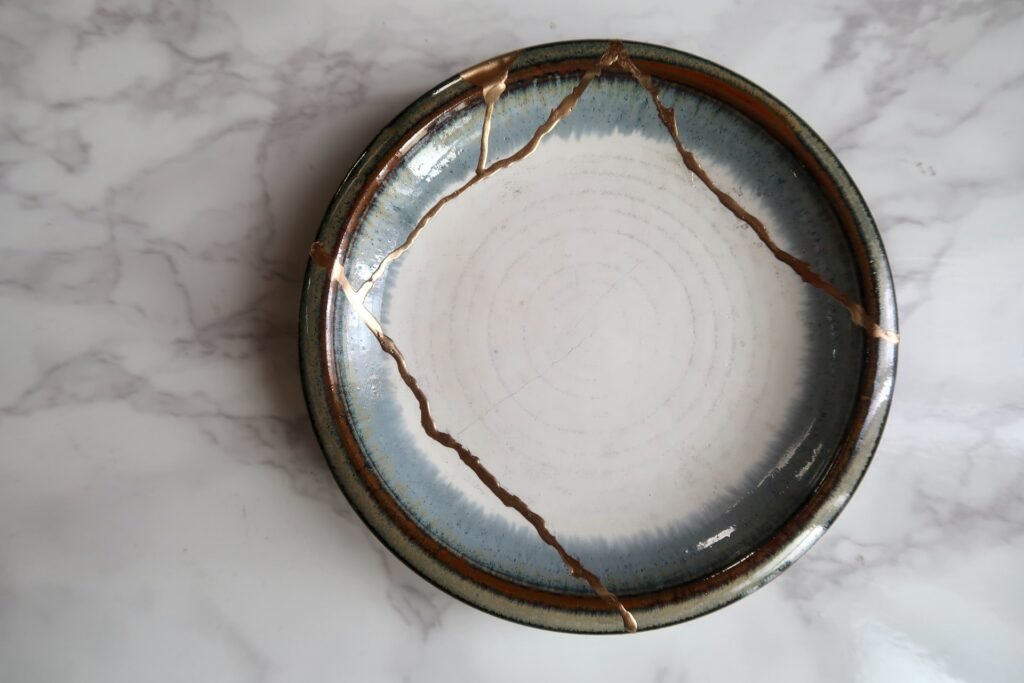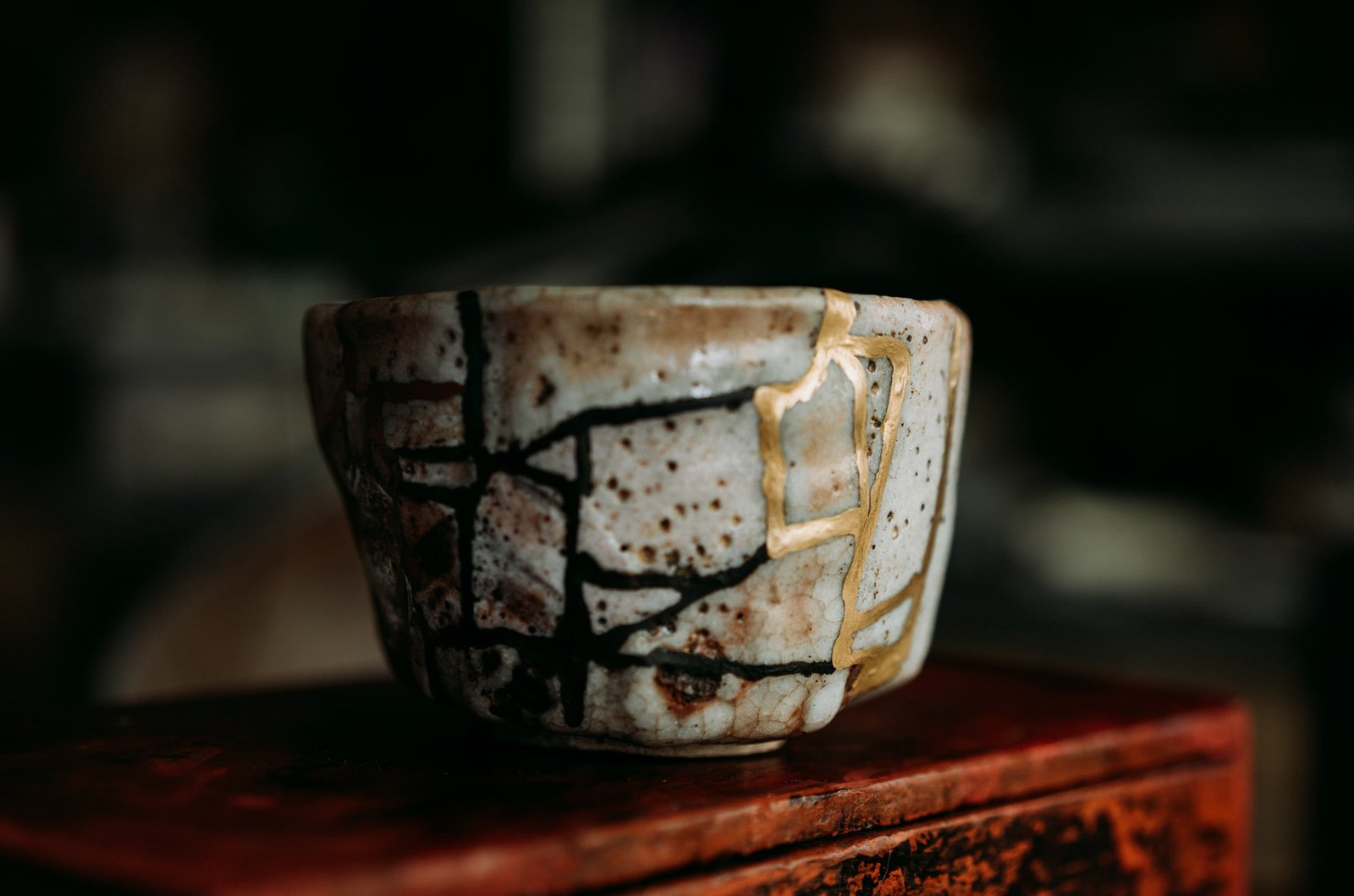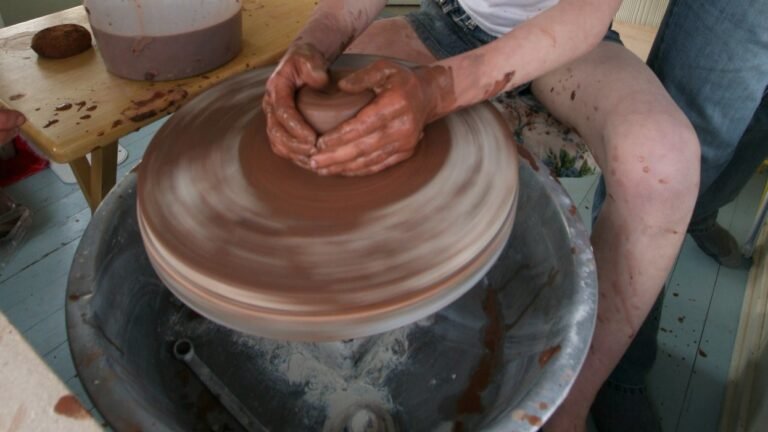What Is Kintsugi and What Is the Philosophy Behind It?
There are a lot of times in a person’s life when they face a failure and feel their confidence is shattered into pieces. Similarly, there are times when a ceramic masterpiece might fall in front of you and break down into several pieces. What will you do in such scenarios?
Kintsugi is a Japanese art form that allows you to join back the broken pieces together. Art practitioners use golden lacquer to fill the cracks that make the broken masterpiece unique. This relates to the wonderful philosophy in one’s life where a person might face difficult situations and feel broken. In such a scenario, they should relish the blemishes and fill the scars with golden linings.
The entire process results in a design with beautiful artistry and the irregular lines are not seen as flaws. Rather they are perceived as the elements of beauty. Just like improved ceramic art, a person’s vulnerabilities make them human, and exposing them in front of another person builds the relationship stronger.
What Is the Name of a Piece of Broken Pottery?
Kintsugi or more commonly known as gold mending is the process of repairing broken or discarded vessels with a golden adhesive. It is not a source of shame, rather it beautifies the lines made by time and rough use.
The resultant art form is more valuable than the original. The philosophy behind the Kintsugi artform is quite thought-provoking and can be directly applied to human life. It signifies the importance of embracing tough times in an individual’s life and coming out of it with a better personality.
What Is the Meaning Behind Kintsugi?
The art of Kintsugi means ‘golden joinery.’ Moreover, Kintsugi is more than an art form. It is a way of life and is often used as a metaphor for healing ourselves. It teaches us to celebrate imperfections, whether they are in appearance, character, or actions.
Once we learn to accept our flaws, we can lead a happy life with a deeper sense of content and fulfillment. It helps us to widen our perspective and makes us look for opportunities for improvement.
Kintsugi tells us that one can improvise a broken piece to make it useful again. It inspires us to accept people and appreciate their potential despite past failures. According to the Zen guru Baso Doitsu, ‘the ordinary mind is the way’. It is the mind with no judgments and biases.
What Is Japanese Broken Pottery Called?
Contemporary artists have adopted and adapted the Japanese art form of Kintsugi to mend broken pottery with gold fillings.
The concept of Kintsugi stems from the wabi-sabi aesthetic philosophy of Japan that encourages appreciation of flaws. The idea behind Kintsugi is not new. It resonates with the concept of adhering to parts of weapons in Asia for thousands of years, using the glue made from the sap of a Japanese tree.
The restoration of broken pieces takes around three months after gluing and soldering the fragments with gold lacquer.
Additionally, there are DIY Kintsugi kits available in the market. You can check out the YouTube videos to create Kintsugi art at home. My personal favorite is the one filmed by Kin. He explains the concept in detail and helps you throughout the soldering process.
This video is another tutorial by an authentic Japanese craftsman helps you understand the artistry better.

How Expensive Is Kintsugi?
Since Kintsugi is a wonderful art form and involves manual labor, it is safe to say that the final products are relatively expensive. One of the eCommerce sites sells Kintsugi masterpiece at $250. Also, it is essential to look for the authenticity of the material.
Take precautionary steps to avoid fraud and prohibit the purchase of inauthentic pieces. Pay close attention to the marking price at the bottom and avoid overpaying for the artwork. Therefore, it is advised to conduct an ample amount of research in advance before you make your first purchase.
As much as one would love to own Kintsugi artwork, it is almost too expensive to purchase from auctions. Therefore, it is always recommended to create one for yourself using DIY tutorials. After carefully choosing your Kintsugi object, prepare the adhesive and glue the ceramics together. Once the adhesive is almost dry, sprinkle the golden powder to fill the cracks.
What Is Japanese Pottery Gold?
Unless there is a personal affinity to a broken ceramic piece, it is considered useless. Japanese craftsmen introduced an innovative idea to preserve broken pieces and give them a valuable outlook using gold fillings. The gold can be used in various forms such as powdered gold or liquid gold leaf. Either way, it gives your ceramic vessel an antique look and makes it one of a kind.
If you have a beautiful Vase gifted to you by your ancestors and somehow it gets broken. Do not get disheartened as the Japanese Kintsugi concept is the solution for your misery. It is a method to repair ceramics and produce aesthetically pleasing creations.
The concept became so popular that people started to deliberately break their vessels and desired to get them repaired using this method. It increased the value of their vessel as well as made it more resilient.
Who Started Kintsugi?
The origin of Kintsugi artwork dates back to the 15th century when a Japanese shogun Ashikaga Yoshimasa accidentally broke his favorite tea bowl. He sent the bowl to China to get it repaired but his efforts went in vain. So the local craftsmen filled the cracks with golden lacquer and thus began an era of a new art form.
Ever since the 15th century, the concepts of Kintsugi have been adapted not only by craftsmen worldwide but also by Zen masters to reflect one’s actions in their lives. The philosophy behind this artform helped them to understand the beauty of the aging process. It emphasizes engaging with reality and broadening one’s perception of seeing things in the world. It teaches the human race to live humbly and eradicate the need to focus on materialism.







